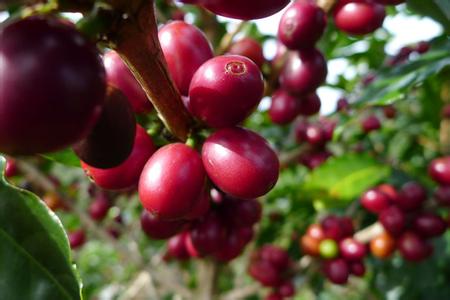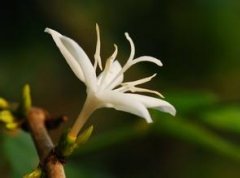Indonesian Coffee Indonesian Coffee Features and Markets
In the mid-17th century, coffee trees were introduced to Indonesia by the Dutch (some official sources believe that earlier). The first batch of coffee from Java was sold to Amsterdam in 1712. However, coffee trees in all plantations were destroyed by coffee rust in 1877, and Robart coffee trees had to be introduced from Africa to replace the original species. Today, only 6% of coffee beans and 10% of coffee beans are Arabian coffee beans. Indonesia is the world's leading producer of Robart coffee, with more than half of the coffee coming from small plantations, accounting for about 90% of the total output.

Coffee producing areas in Indonesia:
Coffee is produced throughout Indonesia (Indonesia), and Java occupies an extremely important position in coffee history.
The best growing areas in the archipelago are in Java, Sumatra, Sulawesi and Flores.
Java produces exquisite aromatic coffee with relatively low acidity, delicate taste and good balance. Java coffee has a better aroma and acidity than coffee from Sumatra and Sulawesi. The best plantations in Java are Blawan, Jambit, Kayumas and Pankur. Java mocha is a mixture of Java coffee and Yemeni mocha coffee.
Sumatra, the second largest island in the Indonesian archipelago, is the center of Indonesia's oil industry, and its rubber and timber are also famous exports. However, the coffee in Sumatra is more eye-catching, which is similar to Java coffee, but with slightly heavier grains. Coffee beans from Mandheling and Ankola have also received a lot of attention, and the former is even known as the world's fullest coffee beans.
The island of Sulawesi, located between Borneo and New Guinea, is sometimes called Celebes. The coffee produced on the island is full of grains and rich in flavor. The best coffee beans come from Kalossi and Rantepao in the southern part of the island. Among the many tastes of spleen, try Celebes Kalosi coffee.
One of the main coffee producers in New Guinea is the Sigri plantation, whose products are the same as the overall style of archipelago coffee, full of particles and well balanced.
The characteristics of Indonesian coffee:
On the whole, Indonesian coffee has a strong flavor, mellow taste, slightly syrup flavor and excellent acidity. What attracts consumers is the unique quality of its Arabica coffee beans. You can add milk or cream to high-quality Indonesian coffee without worrying about affecting its taste. Indonesian coffee is divided into six grades, the best of which is AP. But no one knows exactly what these two capital letters stand for.
Flavor: Sumatra coffee is heavy, with syrup and chocolate flavor, suitable for drinking after meals; Java coffee is full-grained, spicy and medium acidity
Suggested roasting method: medium and deep roasting, suitable for preparing high quality espresso or mixed coffee drinks
★★★: excellent
Indonesian coffee market:
The two main export markets of Indonesian coffee are Germany and Japan, which reflects the excellent quality of the coffee. Although Indonesia produces so much admirable coffee, it is puzzling that local residents prefer Turkish-style coffee to its famous European-style coffee.
When ships replaced sailboats, coffee produced on these islands faced the same problem as Indian coffee from Mysore-that is, consumers were so used to coffee affected by long-distance travel that they were reluctant to accept the taste of this "fresh" coffee. To solve this problem, the Indonesian government has tried its best to copy coffee affected by long-distance travel, and they have "stored" coffee beans for up to a year. However, what is not satisfactory is that the taste of this wetted coffee is not so widely accepted that it affects the good reputation of its coffee. However, Indonesia's "stored" coffee, or "journey" coffee, is still produced today. Its sales brands are generally OldGovernment, OldBrown and OolJava.
Important Notice :
前街咖啡 FrontStreet Coffee has moved to new addredd:
FrontStreet Coffee Address: 315,Donghua East Road,GuangZhou
Tel:020 38364473
- Prev

Kenyan Coffee Market and characteristics of Kenyan coffee
In 1878, the British landed coffee in Africa and set up a coffee plantation in Kenya in the 19th century, when Ethiopian coffee drinks were imported to Kenya through southern Yemen. But it was not until the early 20 th century that the Bourbon Coffee Tree was saint. The Austin Mission (St.AustinMission) was introduced. Origin of coffee in Kenya: most coffee in Kenya (Kenya) grows at 1500 above sea level
- Next

Puerto Rican coffee. Puerto Rican coffee.
In 1736, coffee trees were introduced from Martinique to PuertoRico. Most of the early coffee was grown by immigrants from Corsica. Coffee farms were once prosperous in the 19th century, but the rise of sugarcane and crop farming and the impact of hurricanes and wars made the coffee industry lag behind and is now recovering. The origin of coffee in Puerto Rico: Puerto Rico is the most
Related
- Detailed explanation of Jadeite planting Land in Panamanian Jadeite Manor introduction to the grading system of Jadeite competitive bidding, Red bid, Green bid and Rose Summer
- Story of Coffee planting in Brenka region of Costa Rica Stonehenge Manor anaerobic heavy honey treatment of flavor mouth
- What's on the barrel of Blue Mountain Coffee beans?
- Can American coffee also pull flowers? How to use hot American style to pull out a good-looking pattern?
- Can you make a cold extract with coffee beans? What is the right proportion for cold-extracted coffee formula?
- Indonesian PWN Gold Mandrine Coffee Origin Features Flavor How to Chong? Mandolin coffee is American.
- A brief introduction to the flavor characteristics of Brazilian yellow bourbon coffee beans
- What is the effect of different water quality on the flavor of cold-extracted coffee? What kind of water is best for brewing coffee?
- Why do you think of Rose Summer whenever you mention Panamanian coffee?
- Introduction to the characteristics of authentic blue mountain coffee bean producing areas? What is the CIB Coffee Authority in Jamaica?

